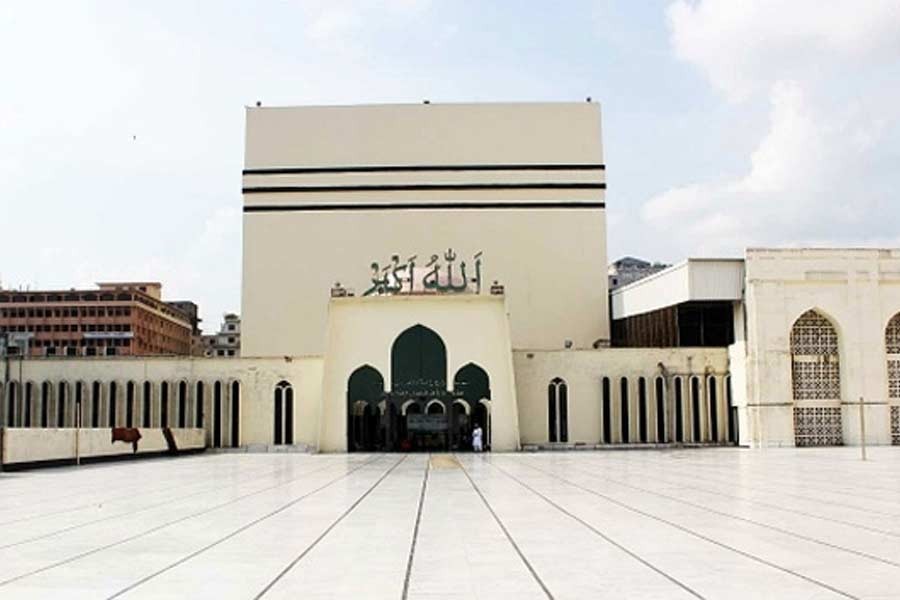If one looks up the phrase ‘City of Mosques,’ on the net, what is found is the name Istanbul, once known as Constantinople, the bicontinental city of Europe and Asia, now the capital of Turkey. Istanbul’s cityscape is adorned with nearly three thousand mosques that have given it the distinction.
Unfortunately, with twice that number of mosques, the capital of Bangladesh is nowhere to be mentioned to the global readers in that regard. However, the consolation prize remains as a colloquial reference: “Dhaka is the city of mosques”.
But, certainly Dhaka has something that Istanbul does not. It’s a city of faiths, abode to the peacefully coexisting religions. While Jerusalem can be known as the city of three major faiths – Judaism, Christianity and Islam –, Dhaka deserves to be crowned as the city that preserves the monuments of more than three faiths.
After all, who would guess that the city known for its mosques has a place called Mohakhali, named after the ‘great’ (Moha) goddess Kali? Yes, as the local saying goes, the place was named Mohakhali right after a famous Kali temple was built in the locality. But the temple is no longer a destination for tourism; in fact, one perhaps cannot even say which temple the place was named after.
But if you are after the religious sites of Dhaka to visit, one can consider paying a visit to Dhakeshwari Temple, the national temple of Bangladesh. Situated near the top educational institutes of the country, this pink and reddish hued structure is the largest temple of Bangladesh, built by Ballal Sen almost eight centuries ago. The name "Dhakeshwari" simply means "Goddess of Dhaka", with an intriguing story of how the temple came to be so many eons ago.
Not far away, situated between Thathari Bazar and Wari, is Joy Kali Temple, another famous temple in Dhaka. And by the Buriganga River in Mitford, Old Dhaka, you will find another historically significant architectural monument – Ramakrishna Mission Temple. The century-old monument was founded by Swami Vivekananda back in 1916. These structures almost sum up the historical and famous architectural Hindu presence in the city.
When it comes to the Islamic architectural monuments, the list goes on. Baitul Mukarram, the national mosque of the country, was designed by the Pakistani architect Abdulhusein Thariani, resembling the cubic structure of the Holy Kaaba in Makkah. The half-a-century-old structure is a nice destination to be explored if one is interested in religious monuments.
In the Armanitola area of Old Dhaka, one can visit the beautiful Star Mosque, decorated with ornate designs and motifs of blue stars. Then there is the Hussaini Dalan, constructed as the Imambara ('House of the Imam') of the Shia Muslims. It was built by the son of Emperor Shah Jahan, Prince Shah Shuja, back in the 17th century. The current structure incorporates both Mughal and British architectural designs. Of the more contemporary structures, the Taqwa mosque of Dhanmondi is worth mentioning.
Although less of religious and more of historical value, the fort of Lalbagh is a major tourist spot, built in the 17th century, though never completed. Also known as Fort Aurangabad, the fort had a chance to get finished under the rule of Shaista Khan, but never met the luck. His daughter Pari Bibi’s remains are contained in the tomb structure in the middle of the fort, covered by a false octagonal dome, wrapped by brass plate, inner wall covered with white marble. The fort has its own beautiful three-domed mosque.
In the centre of the city, in Kakrail area, lies St. Mary’s Cathedral, one of the oldest Catholic churches of Dhaka. Most of the important Christian celebrations take place here. The Armenian Church in Armanitola stands tall as a historic nod to the Armenian community residing in the locality two centuries ago.
Unlike the previously mentioned faith, the Buddhist community lacks majestic historical structures in the city. But still the Buddhist Monastery in Merul Badda makes it to the list, with the Dharmarajika Buddhist Monastery Complex near Kamalapur literally making itself a landmark point as the Basabo Bouddho Mandir. On the Dhaka University campus, one can find the principal Sikh prayer hall, Gurdwara Nanak Shahi, the biggest of the nine or 10 gurdwaras (prayer hall) of the country. Built in 1830, this commemorates the visit of Guru Nanak
Religious harmony is something that Bangladesh can really take pride in and Dhaka is the finest example of that with the gorgeous monuments standing as a witness of centuries of peaceful coexistence.
Abdullah Ibn Mahmud is currently pursuing MBA from IBA at Dhaka University.


